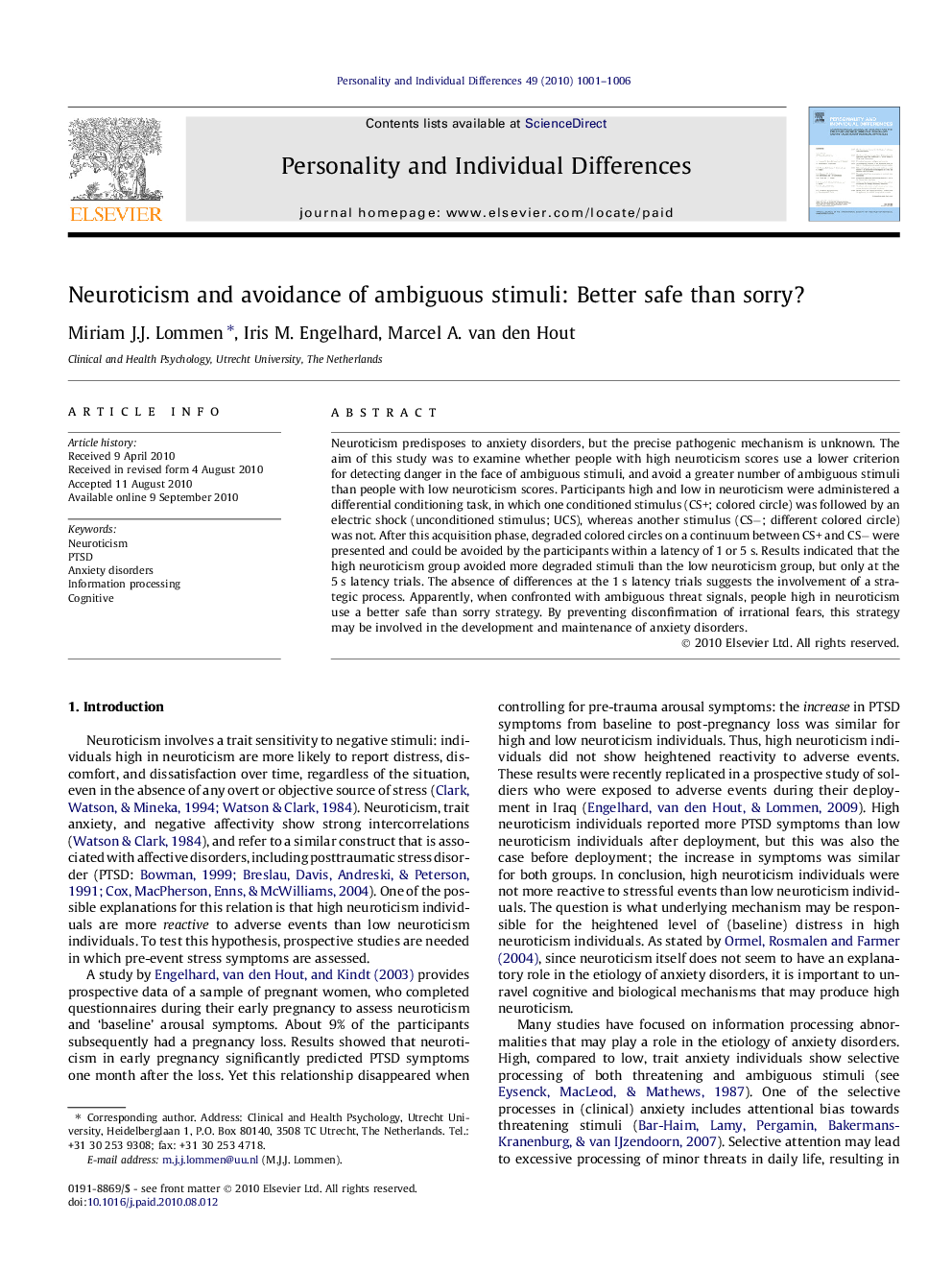| کد مقاله | کد نشریه | سال انتشار | مقاله انگلیسی | نسخه تمام متن |
|---|---|---|---|---|
| 891824 | 914056 | 2010 | 6 صفحه PDF | دانلود رایگان |

Neuroticism predisposes to anxiety disorders, but the precise pathogenic mechanism is unknown. The aim of this study was to examine whether people with high neuroticism scores use a lower criterion for detecting danger in the face of ambiguous stimuli, and avoid a greater number of ambiguous stimuli than people with low neuroticism scores. Participants high and low in neuroticism were administered a differential conditioning task, in which one conditioned stimulus (CS+; colored circle) was followed by an electric shock (unconditioned stimulus; UCS), whereas another stimulus (CS−; different colored circle) was not. After this acquisition phase, degraded colored circles on a continuum between CS+ and CS− were presented and could be avoided by the participants within a latency of 1 or 5 s. Results indicated that the high neuroticism group avoided more degraded stimuli than the low neuroticism group, but only at the 5 s latency trials. The absence of differences at the 1 s latency trials suggests the involvement of a strategic process. Apparently, when confronted with ambiguous threat signals, people high in neuroticism use a better safe than sorry strategy. By preventing disconfirmation of irrational fears, this strategy may be involved in the development and maintenance of anxiety disorders.
Journal: Personality and Individual Differences - Volume 49, Issue 8, December 2010, Pages 1001–1006